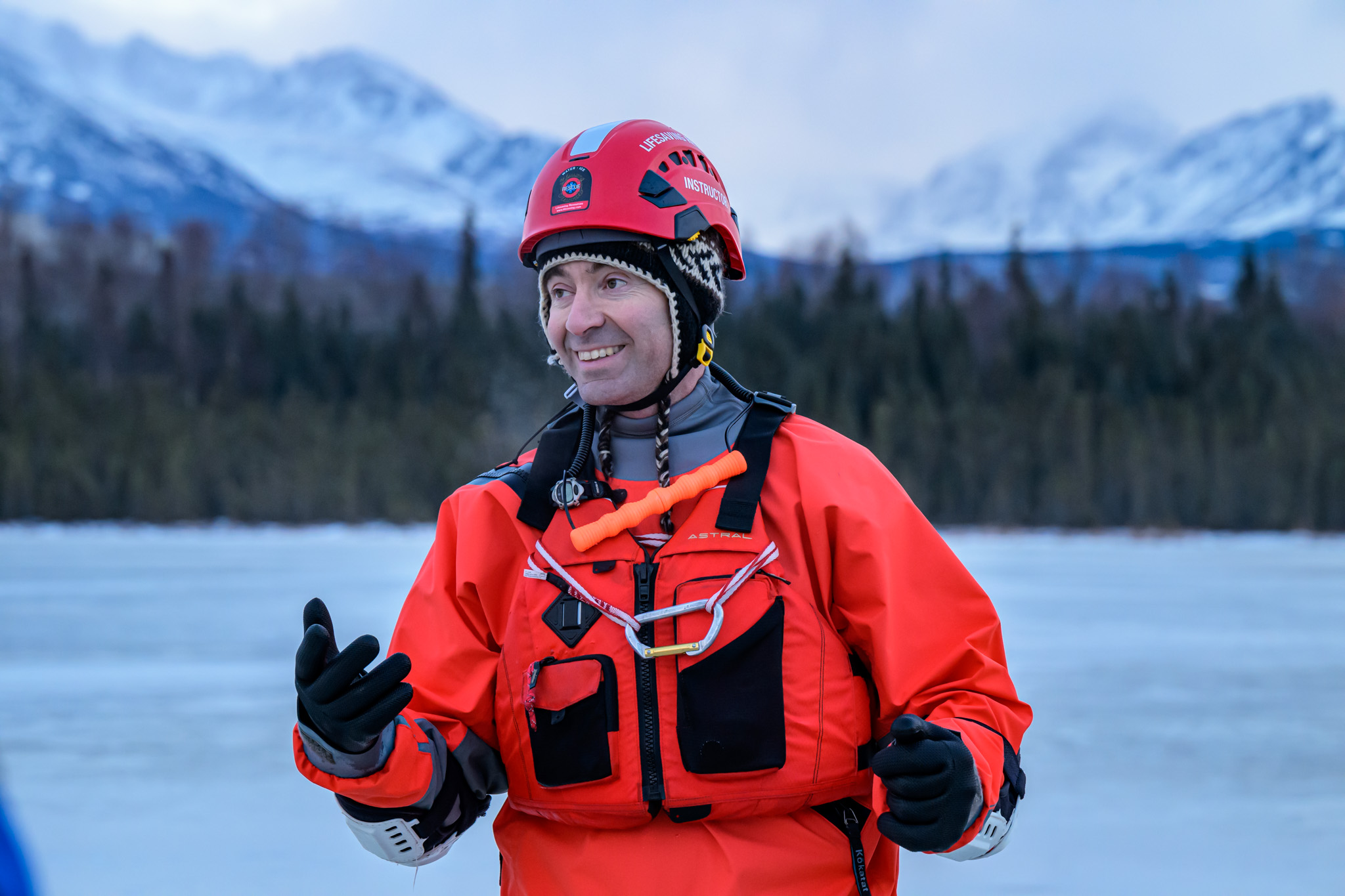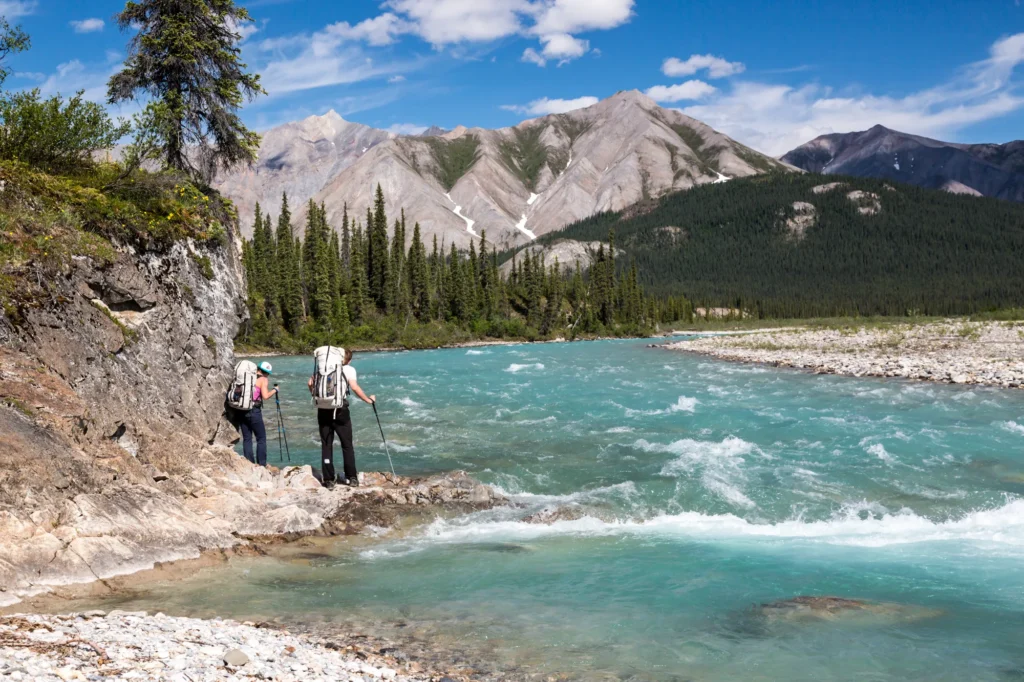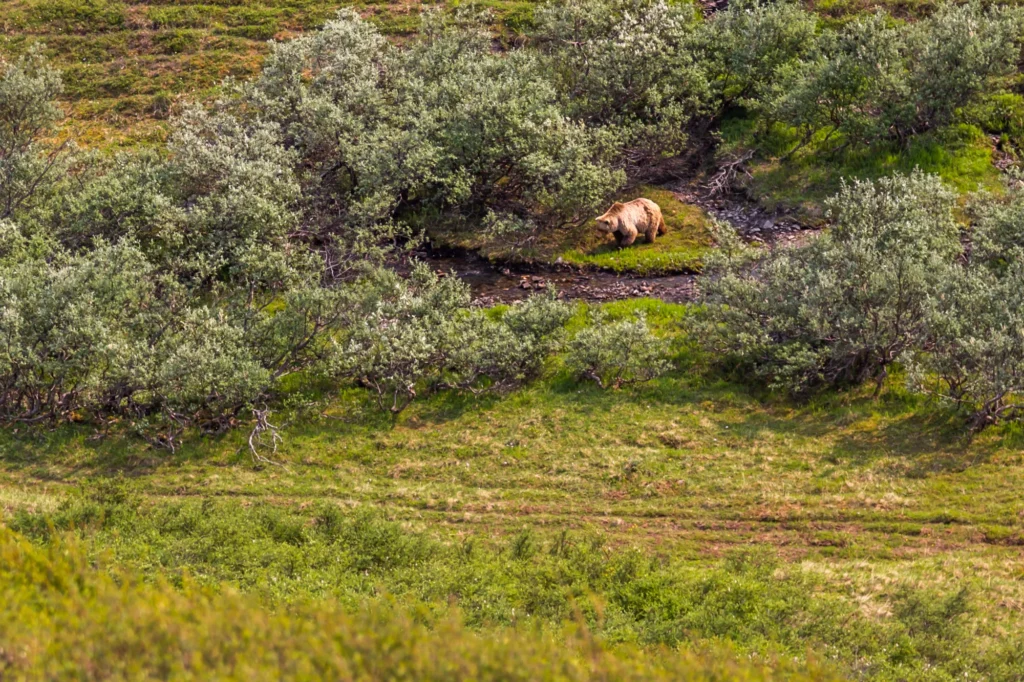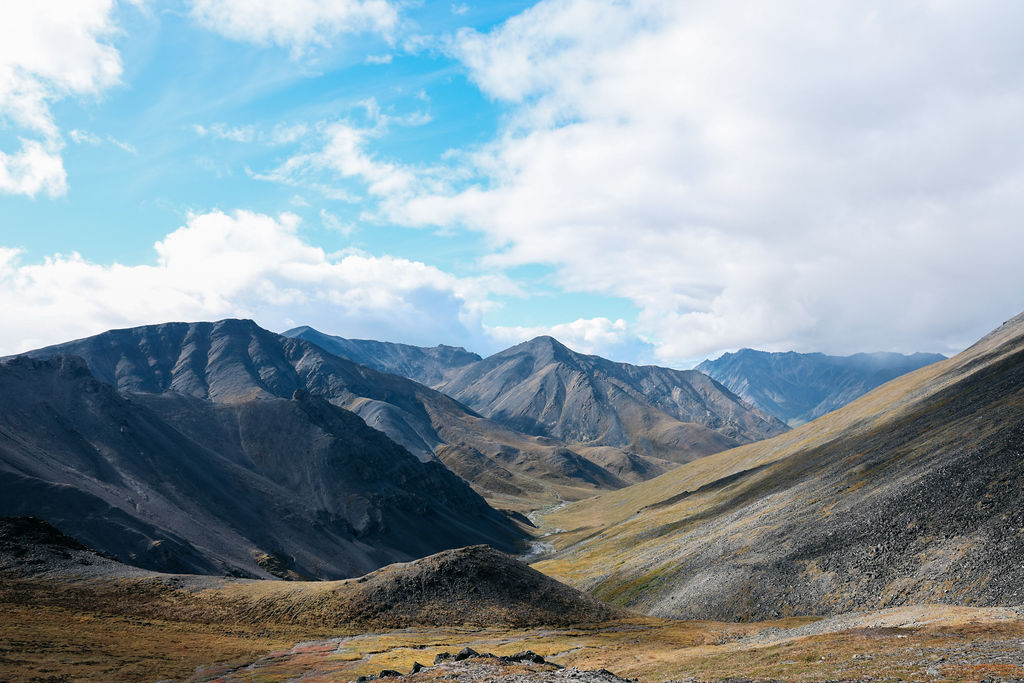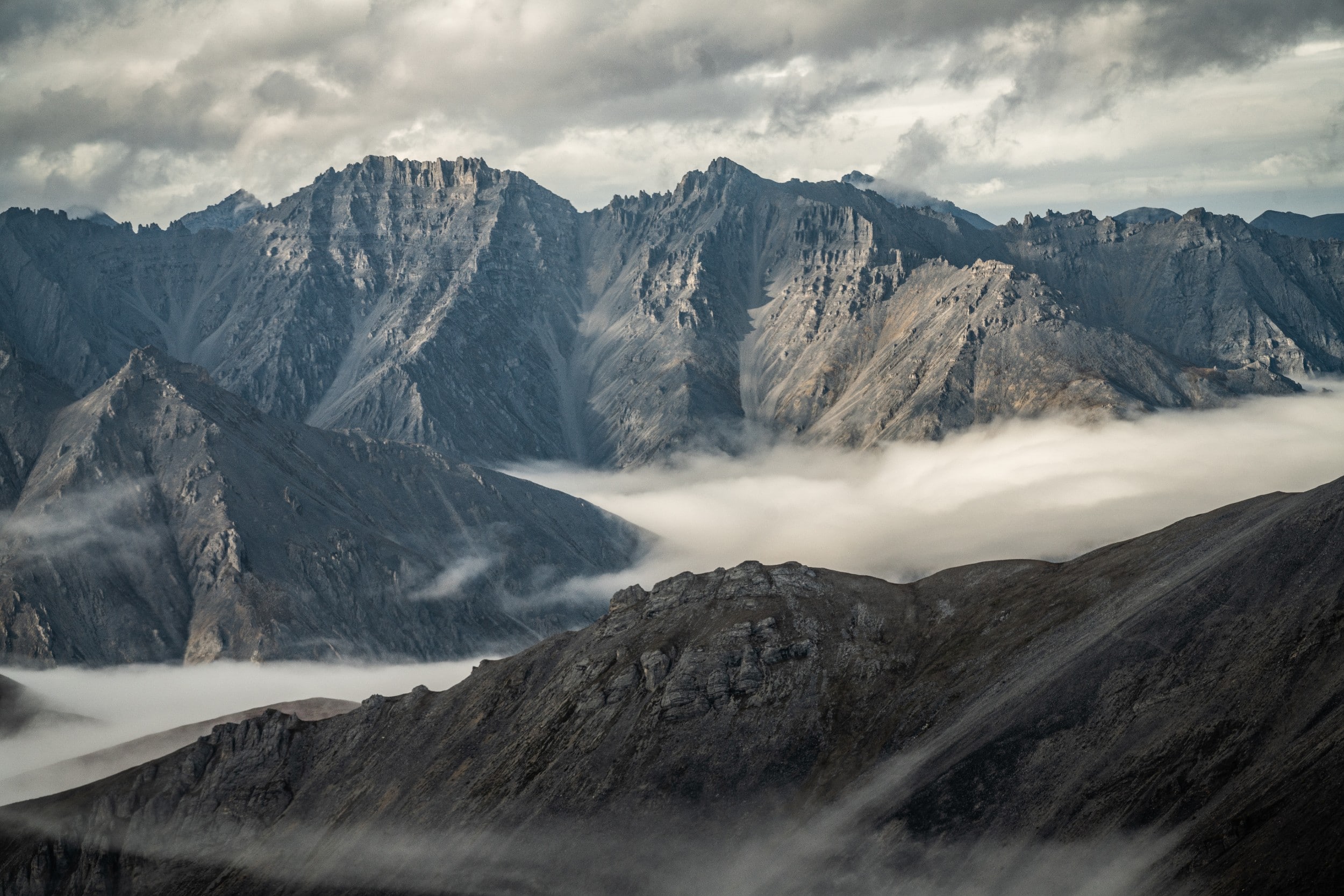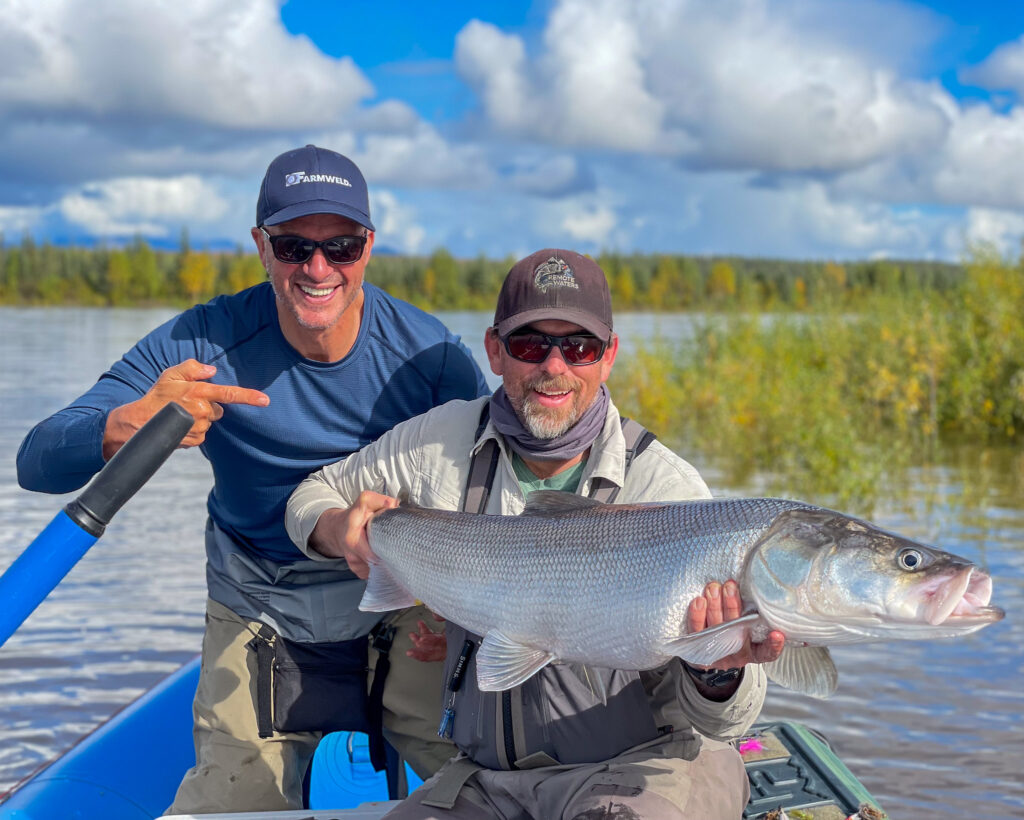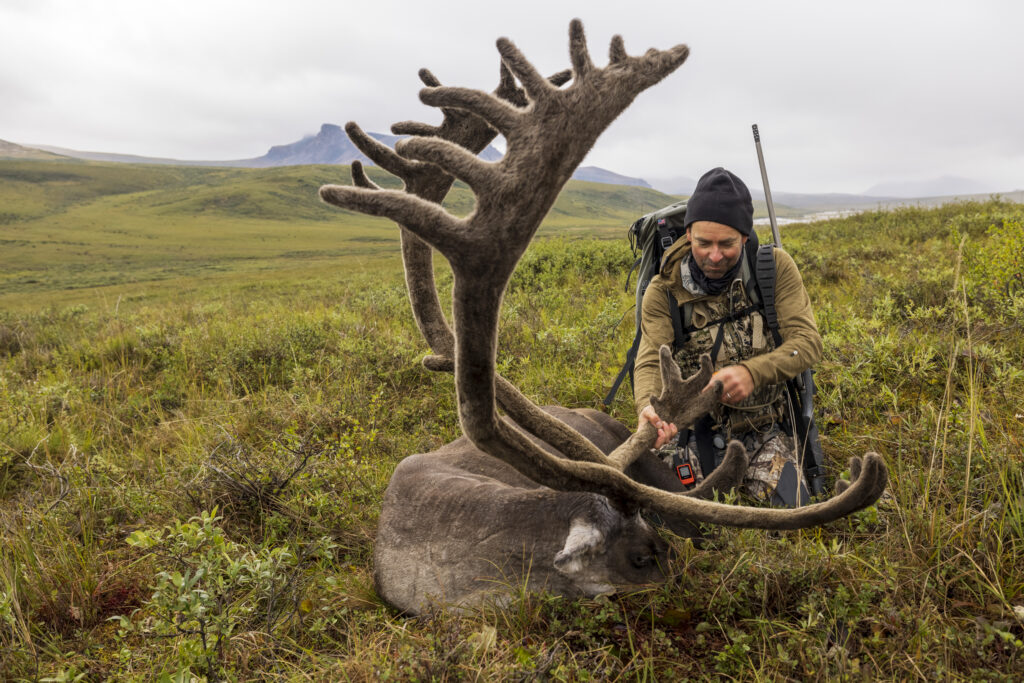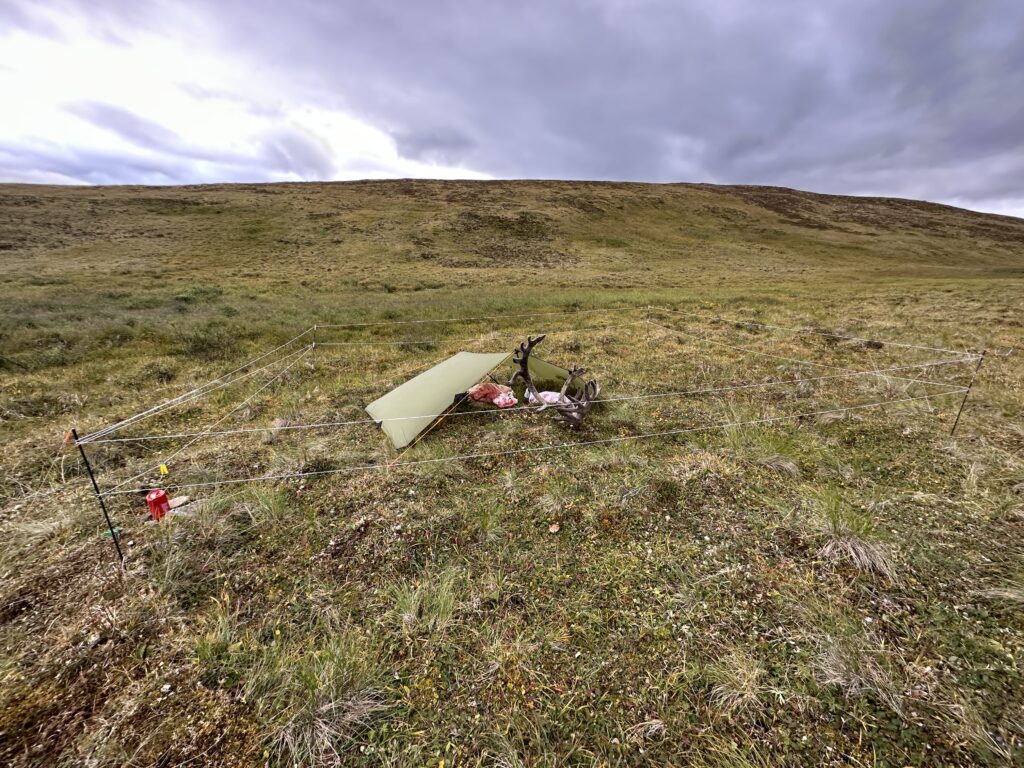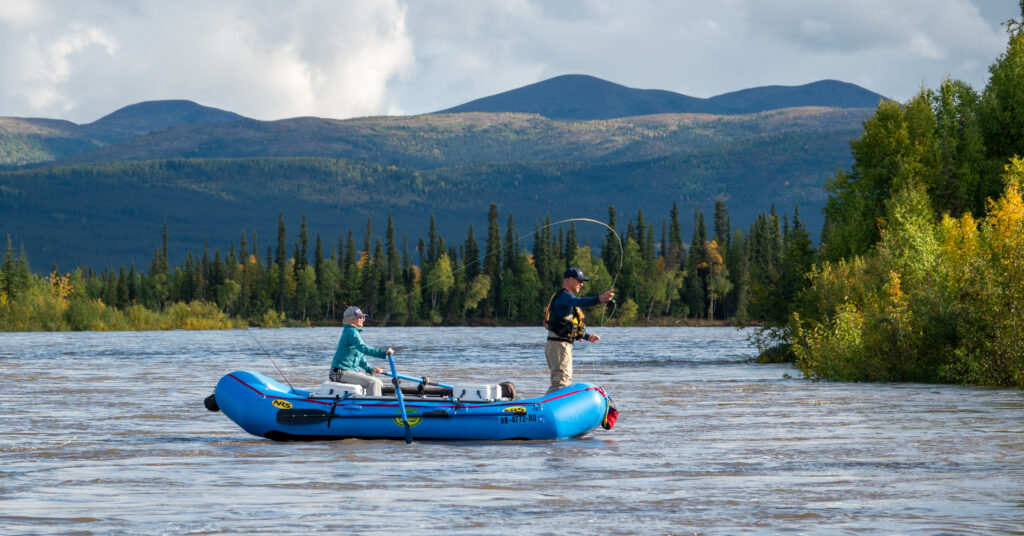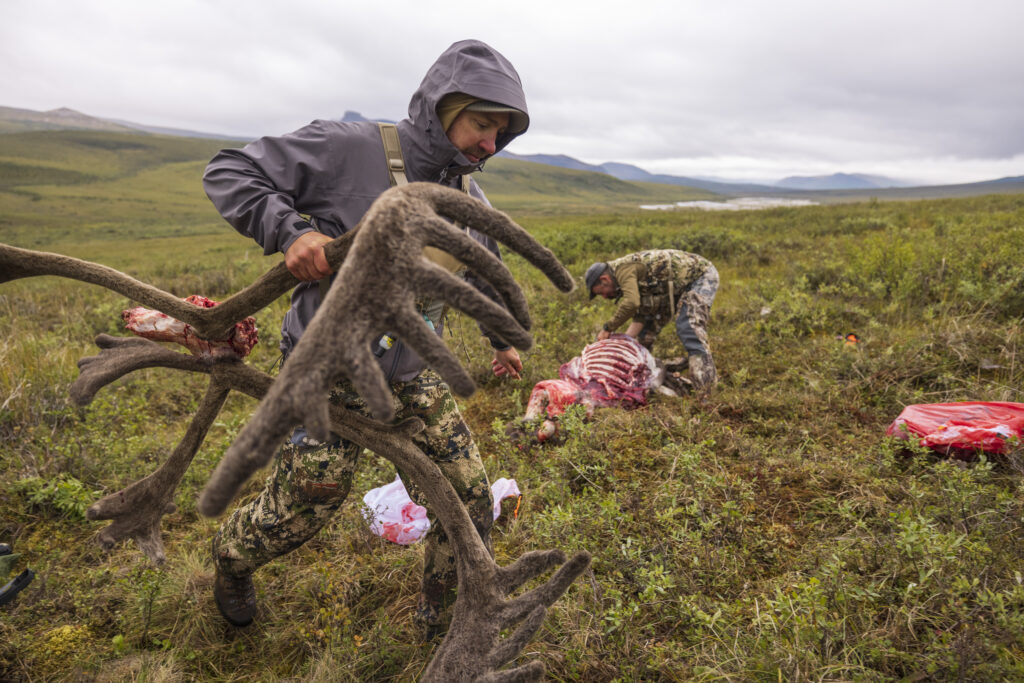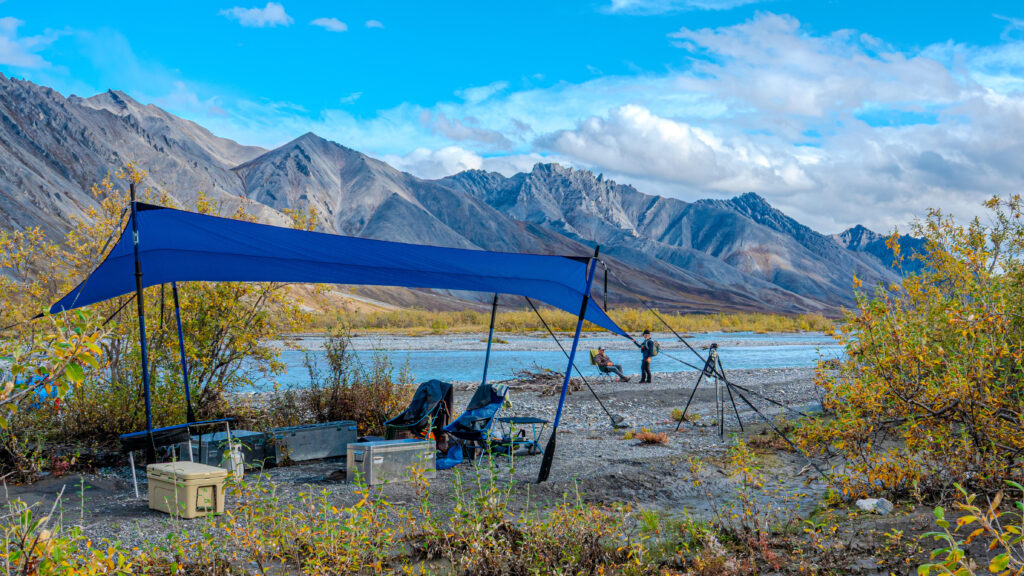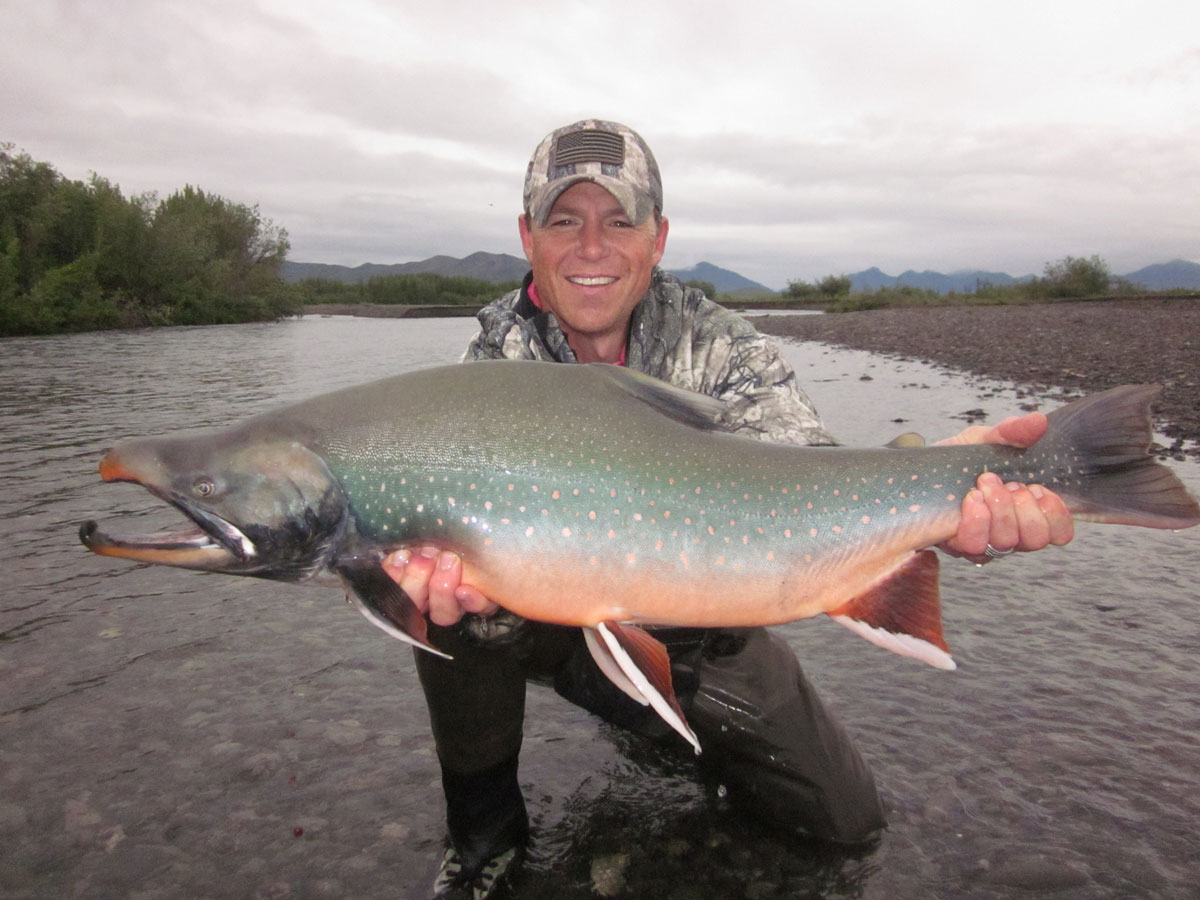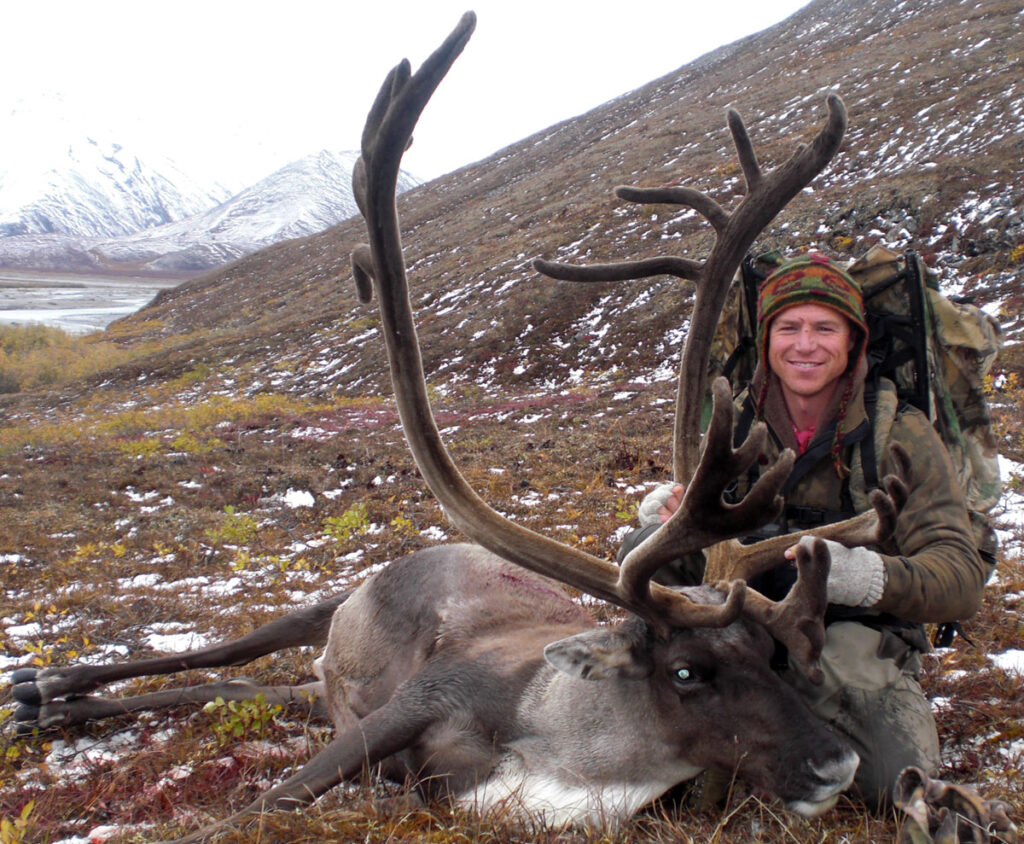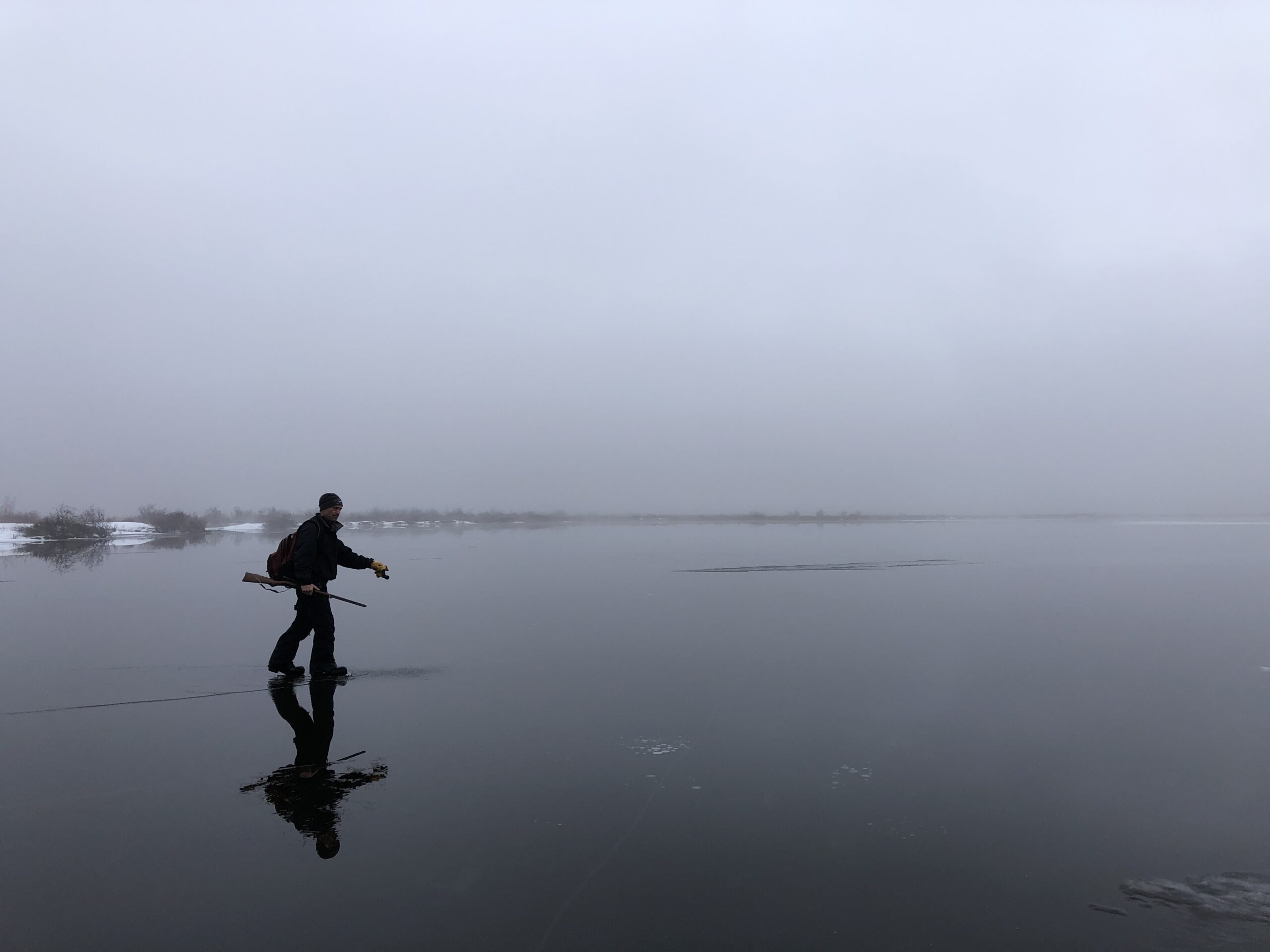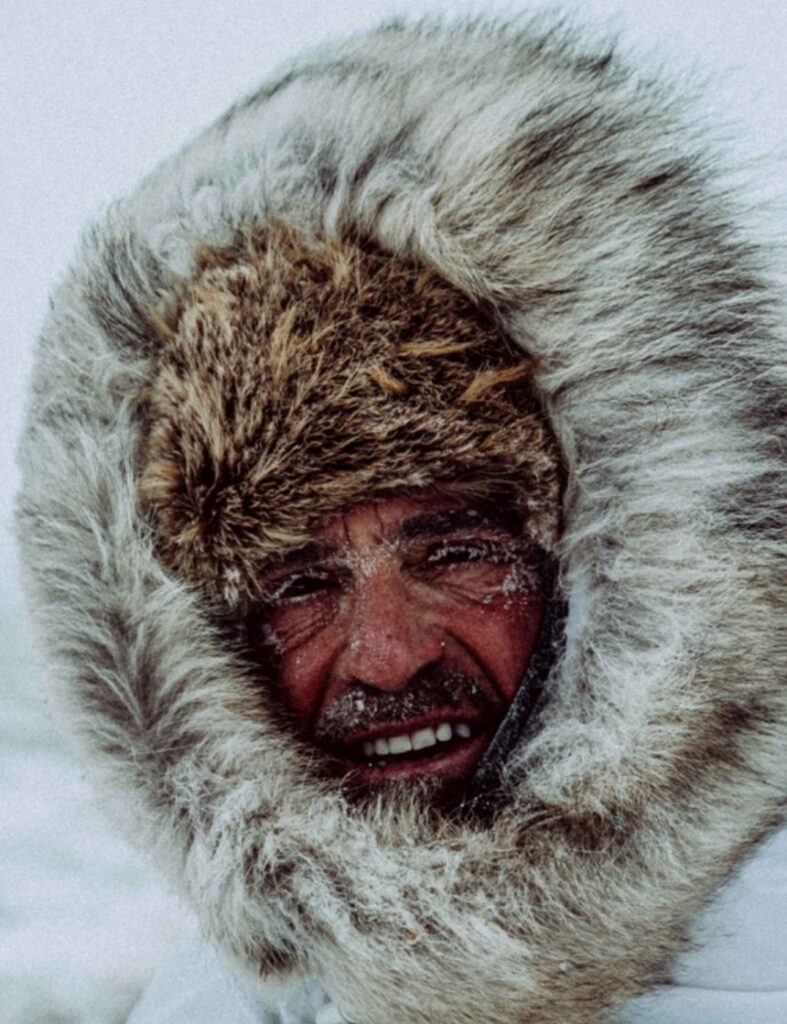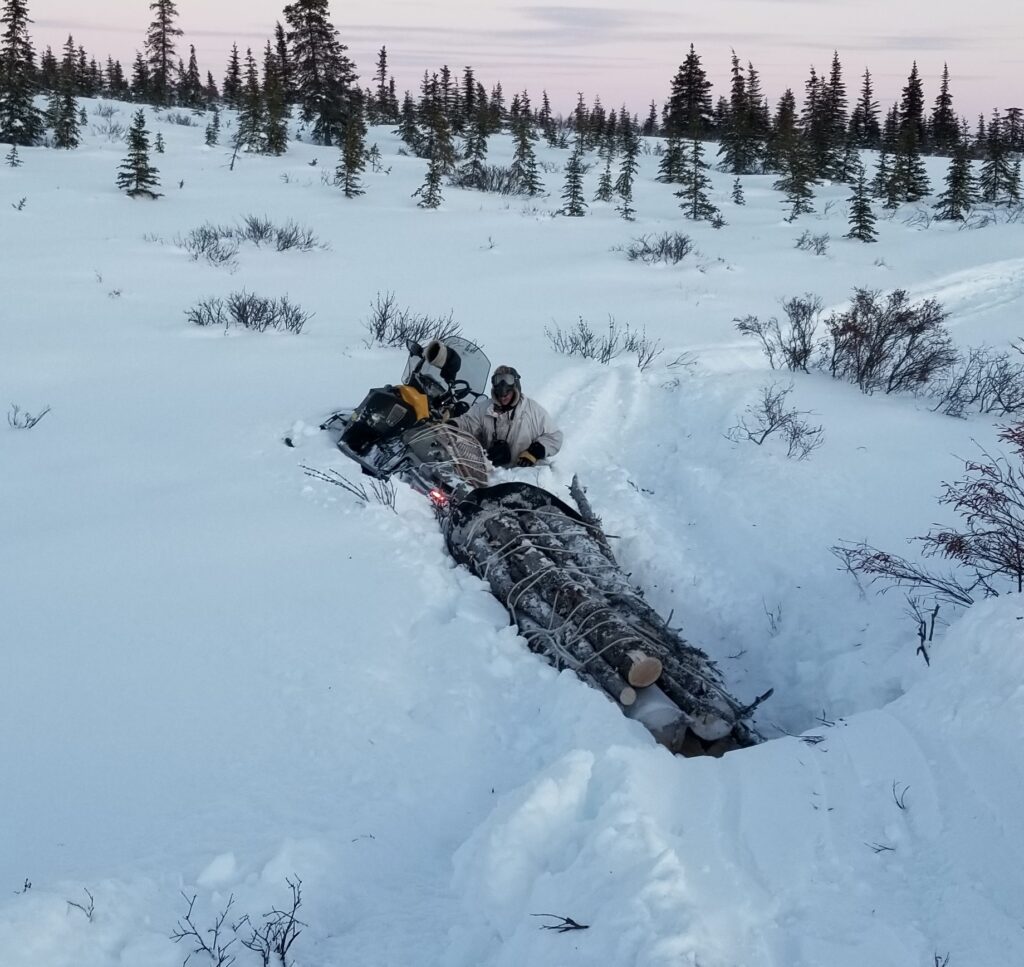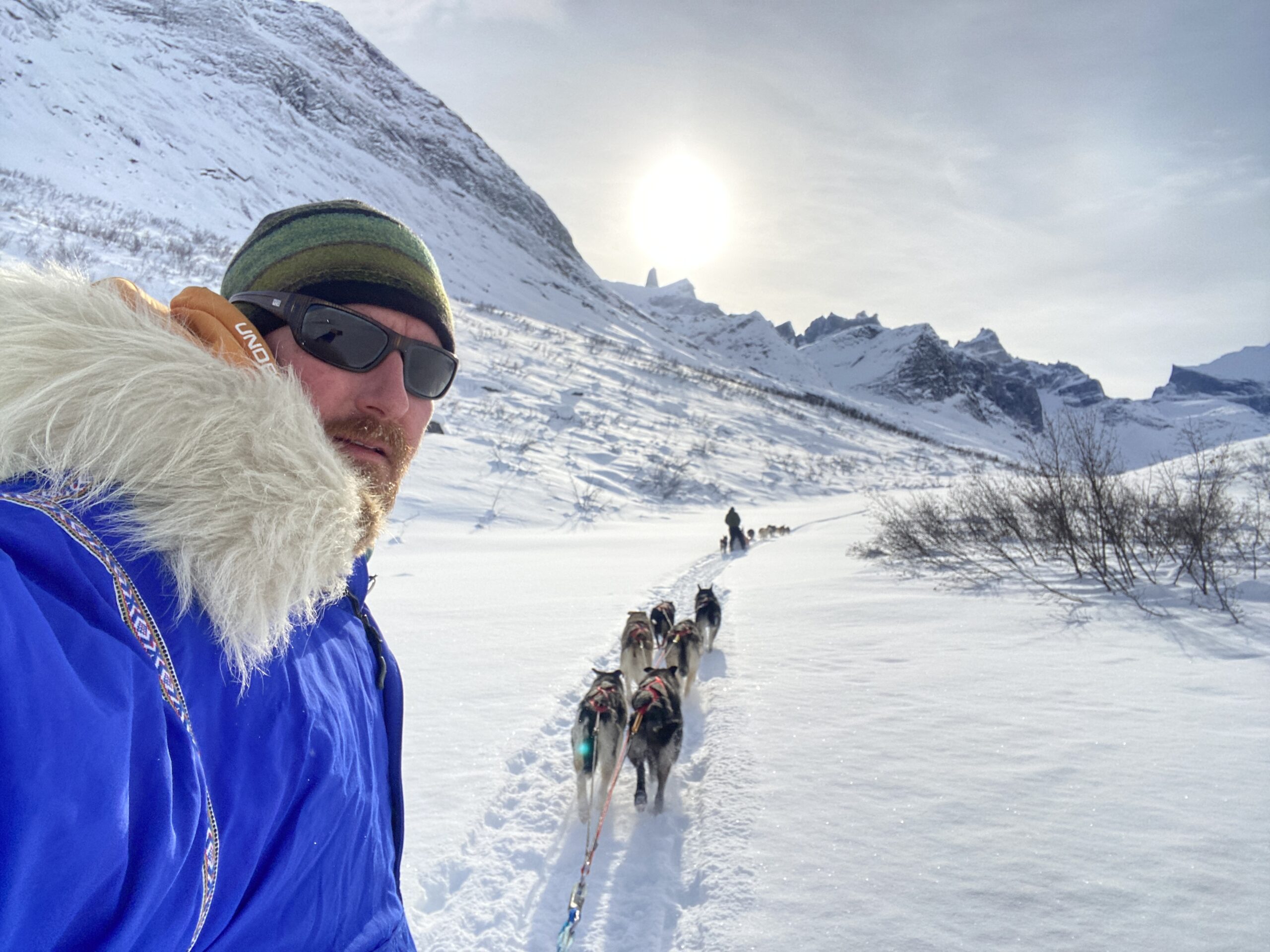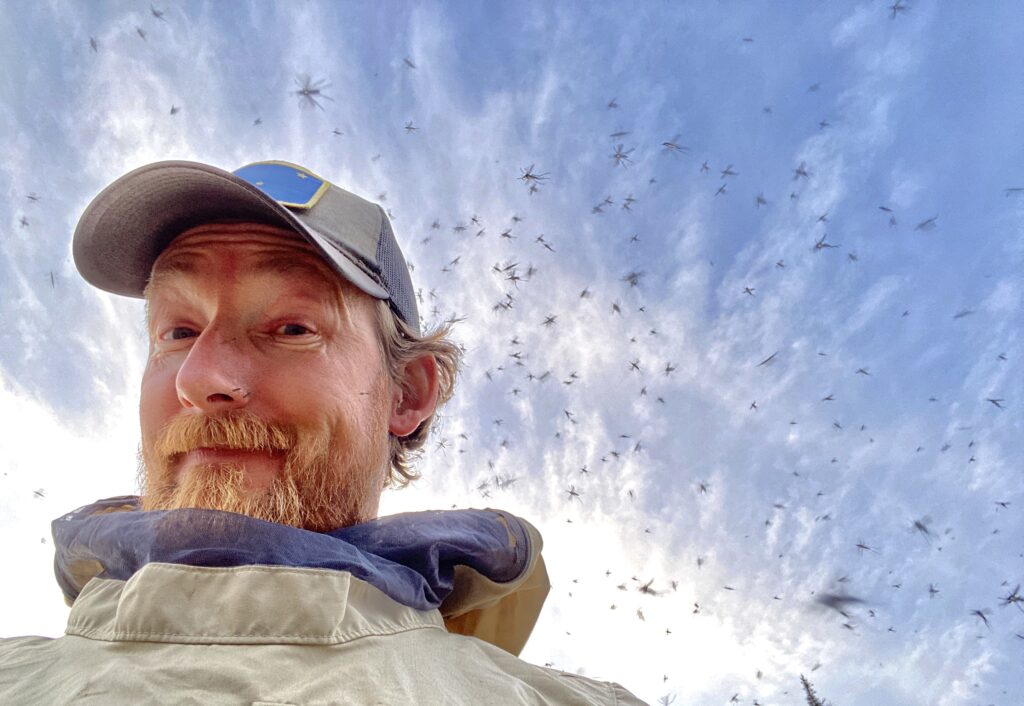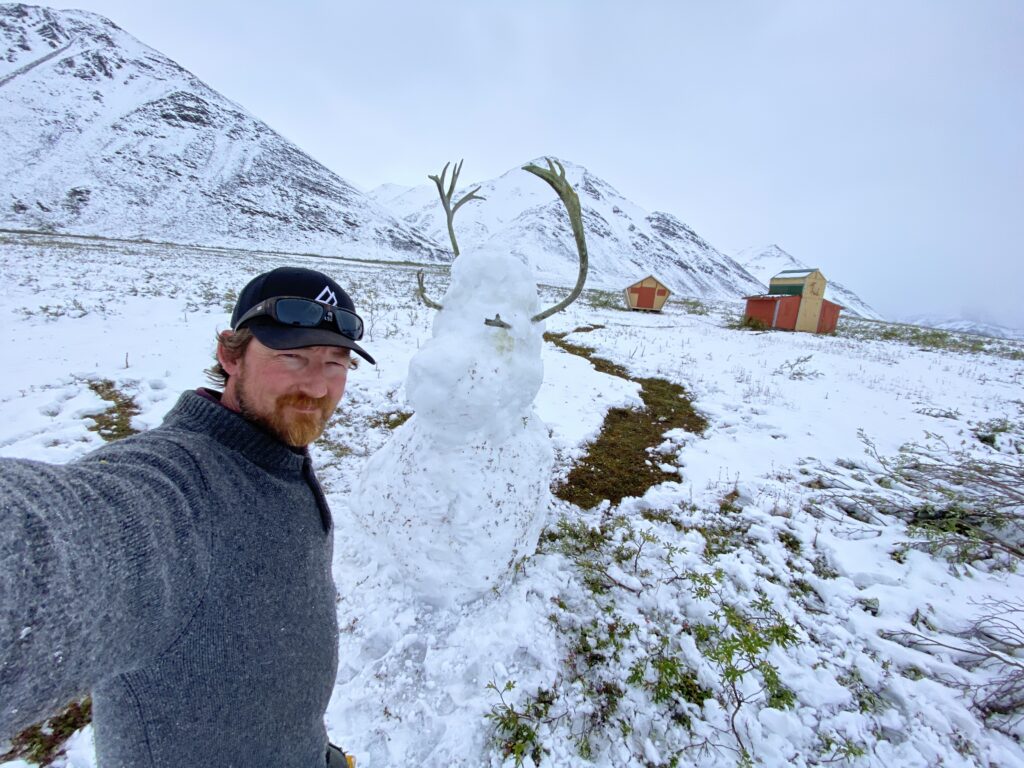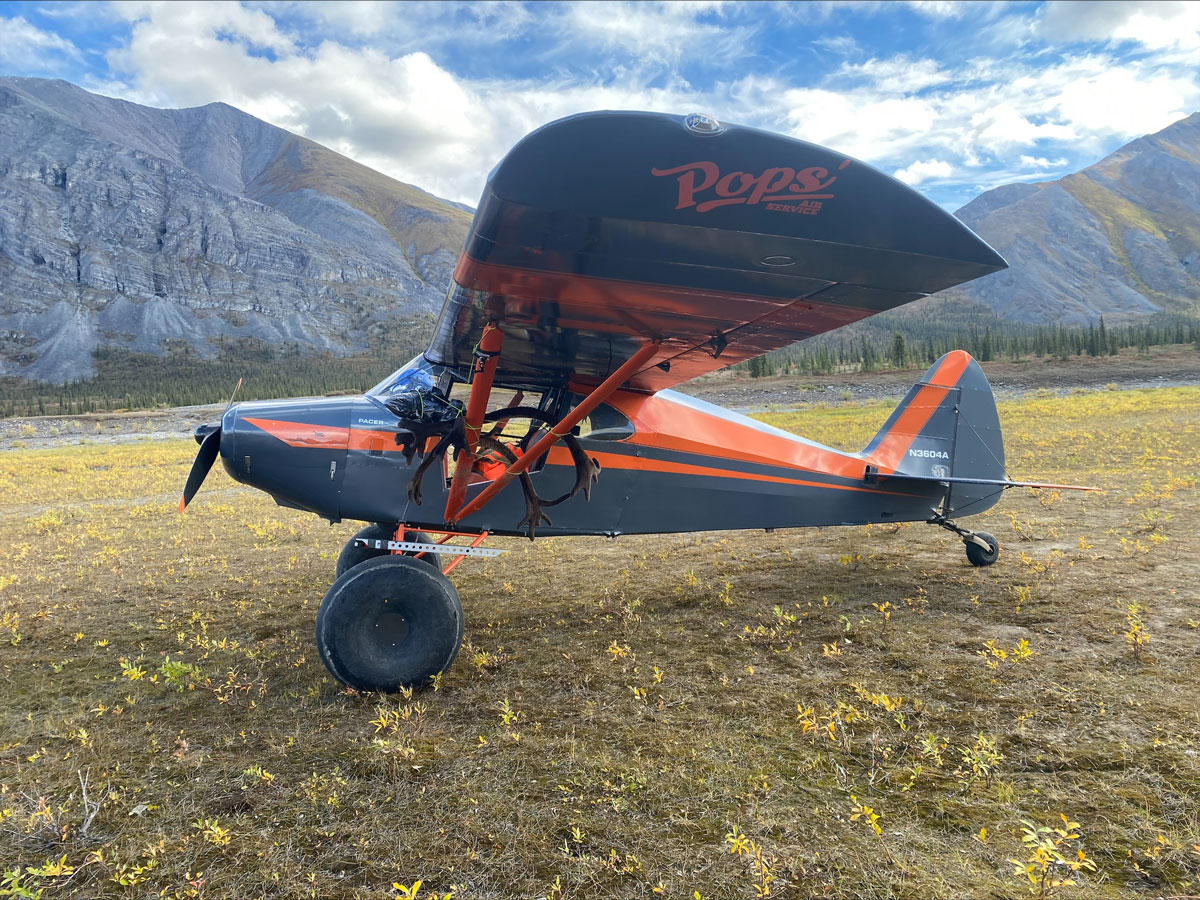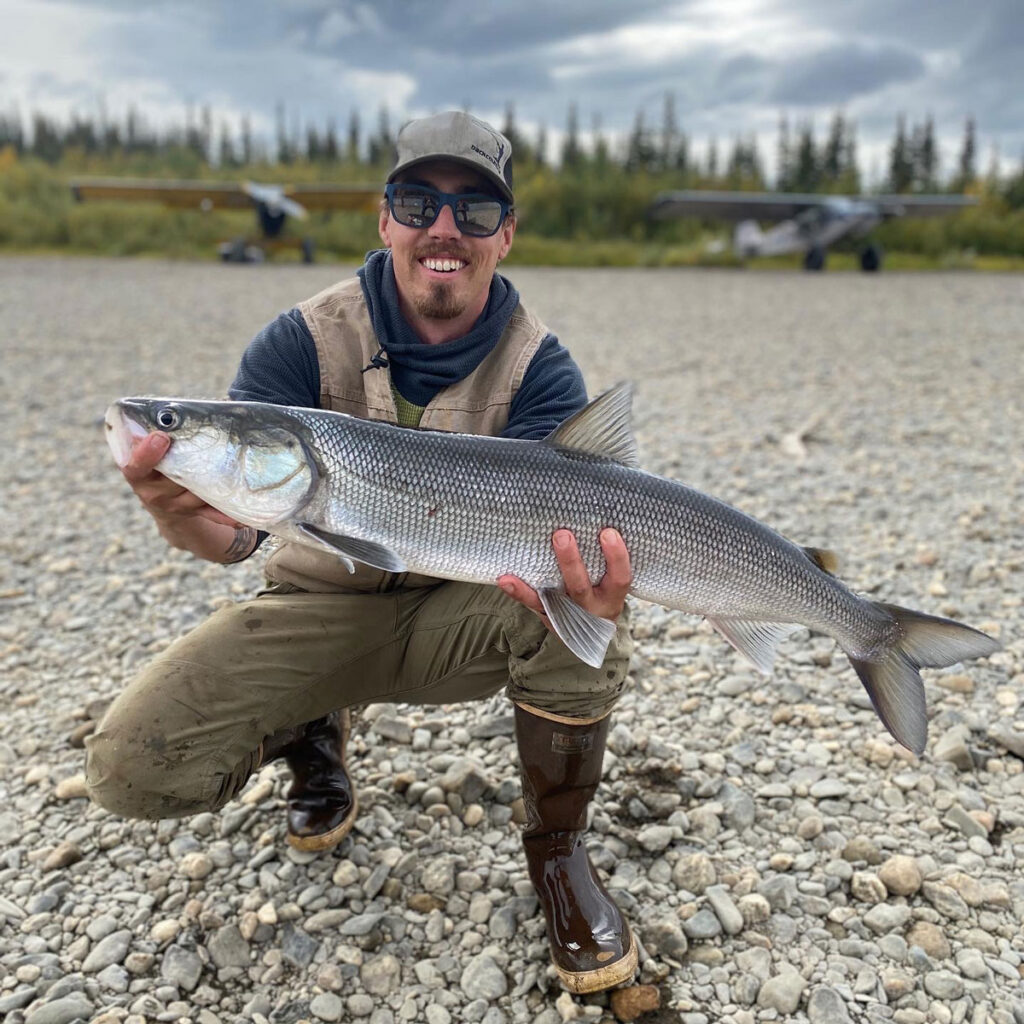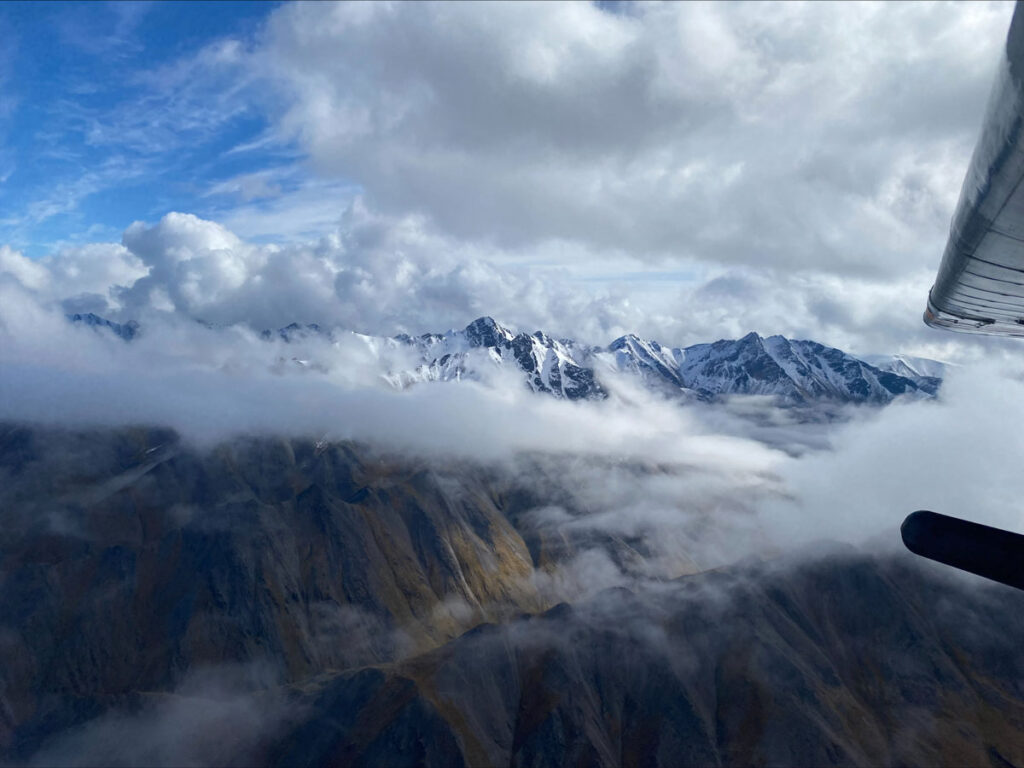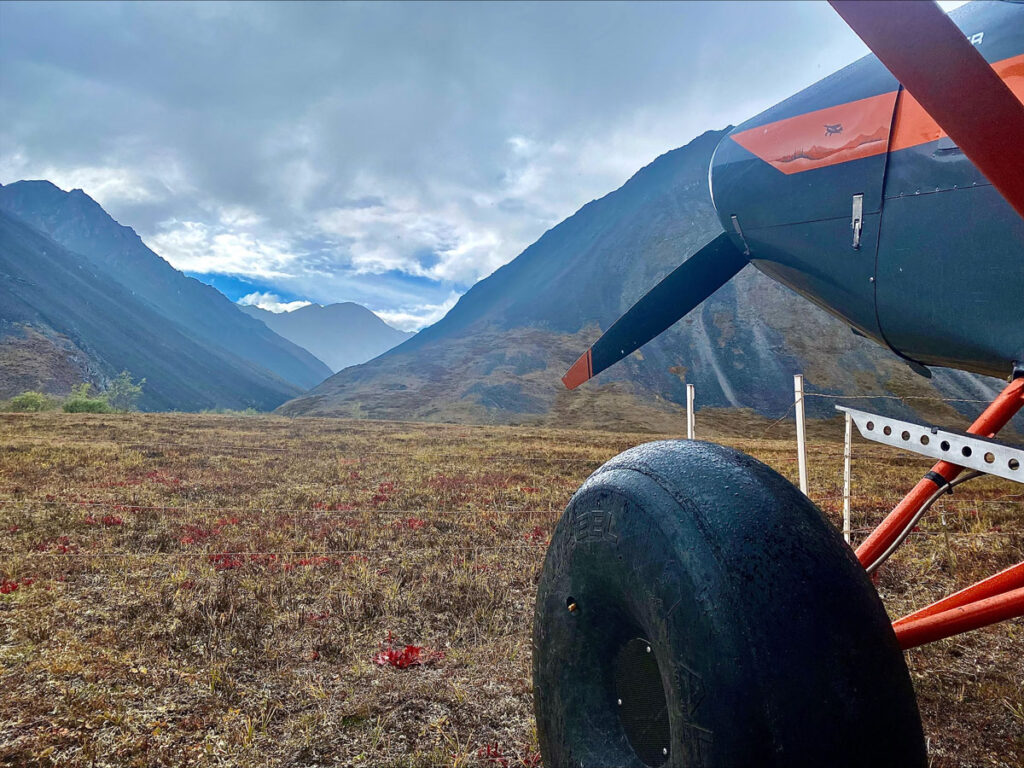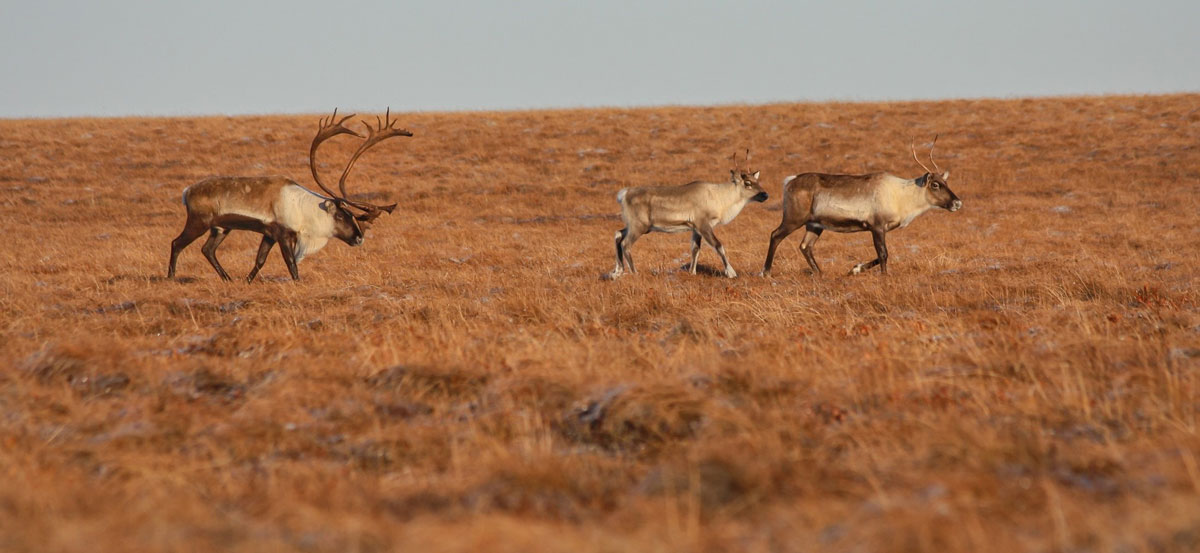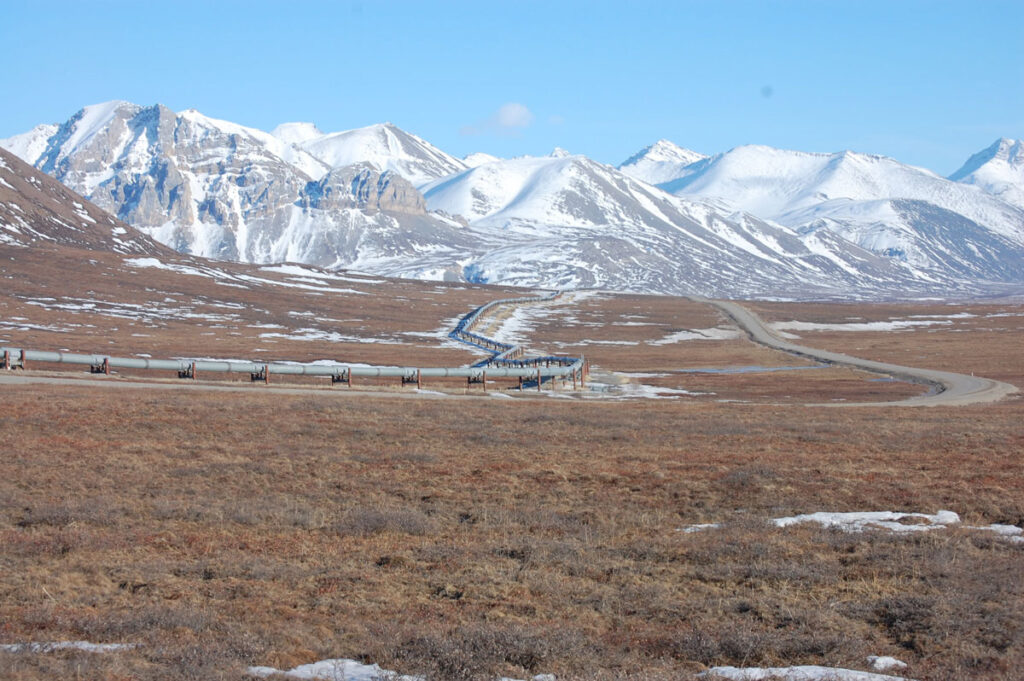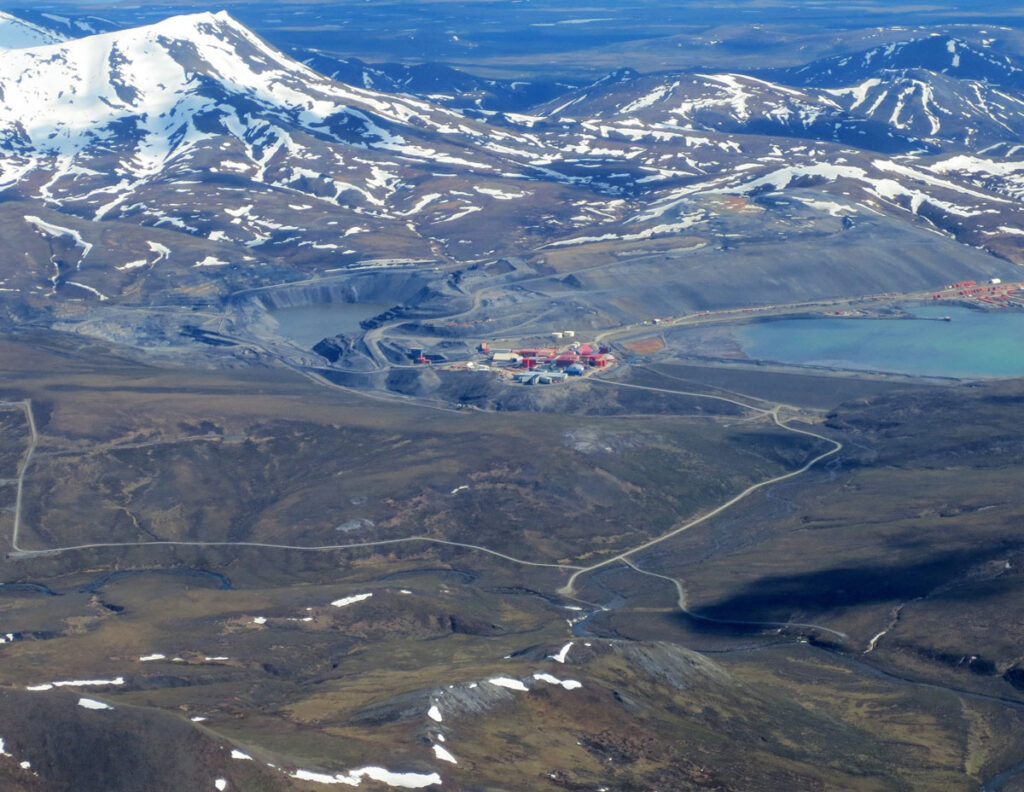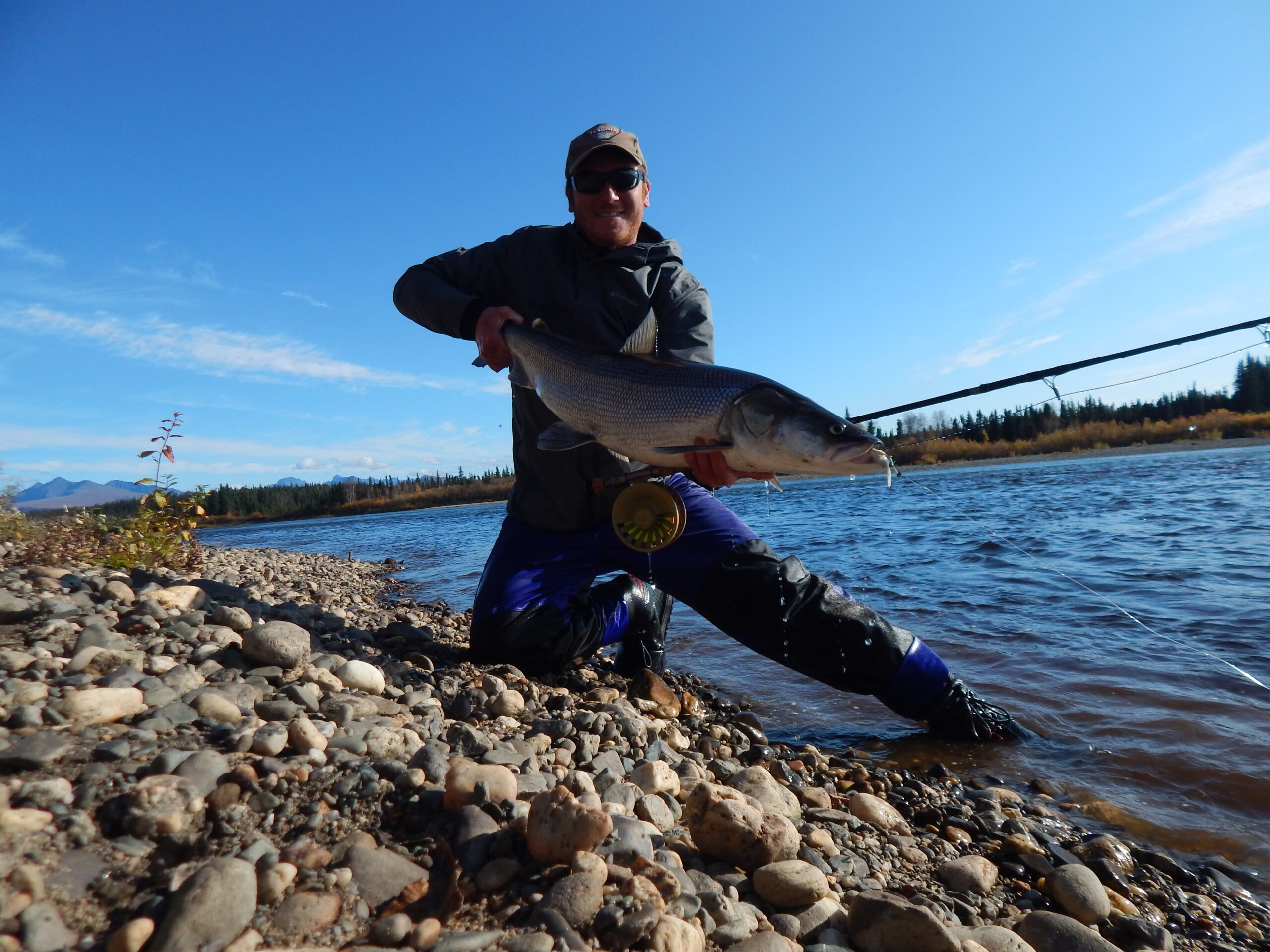
Kevin Fraley is an avid hunter and angler who lives in Fairbanks and works as a fisheries ecologist in Northern Alaska. He recently completed a study to compile baseline contaminants data from fish in sections of the rivers that the proposed Ambler Road would cross if constructed, which revealed that current levels of metals and industrial contaminants in most Arctic grayling, sheefish, and northern pike are low or normal compared to other areas of Alaska. The 211-mile industrial corridor would require nearly 3,000 culverts and bridges over every river flowing south from the Central Brooks Range.
On a 1 to 10 scale, Fraley rates his level of concern over the project at 9. Fraley points out that, if built, the Ambler Road would likely facilitate additional development, including more mines and spinoff roads. As a fisheries professional, Fraley’s biggest worry is the risk of contamination to these fragile Arctic watersheds. And as an outdoorsman whose favorite place on Earth is the Brooks Range, Fraley sees the region as an invaluable part of hunting, fishing, and wilderness heritage that’s well worth safeguarding for future generations.
Here is his story.
How long have you had a connection to the Brooks Range?
I have had a connection to the Brooks Range ever since I was a child growing up in Northwest Montana. My Dad gave me the middle name “Marshall” after Bob Marshall and the wilderness area bearing his name. My Dad read me Marshall’s books describing his travels in the Brooks Range, so I often dreamed about adventure in Alaska and in the far north. This was a major reason why I later moved to Alaska for university and remained in the state. Since then, I have enjoyed many of my own adventures in the Brooks.
What do you love most about working and recreating in the Brooks Range?
The thing I love most about working and recreating in the Brooks Range is being in a place of total escape from the mechanized world. A place of solitude, quiet, beauty, and physical challenge.
Please describe the types of activities you enjoy in the Brooks Range.
I enjoy hunting, fishing, hiking, and floating along the rivers of the Brooks Range. It is my favorite place to recreate in Alaska. I take time every year to embark on a new and exciting adventure there.
Are there particular species of fish, wildlife, or plants that are especially important to you?
I focus on Arctic grayling, sheefish, Dolly Varden, and slimy sculpin for my fish ecology research projects. Currently, I am summarizing data on contaminants in the tissues of these species to provide baseline information in light of climate change and industrial developments on the aquatic ecosystems of the western Brooks Range. Recreationally, I enjoy fly fishing for sheefish in Northwest Alaska and for sea-run Dolly Varden on the Arctic Slope. Caribou are also important to me. They are the primary species I hunt for, and I love having the lean, healthy meat from them—I very rarely purchase red meat from the store.

What makes the Brooks Range so special?
I’ve read a lot of historical accounts of wilderness exploration, hunting, and fishing in Alaska. Particularly, from Bob Marshall. He spent time in Wiseman and the Brooks Range in the 1930s and wrote the book Alaska Wilderness about his experiences hiking around, floating rivers, and encountering wildlife. When I visited the areas described in his book, I noticed that they are almost the same as when he was there more than 80 years ago. Even in Alaska, there’s not many places that are unchanged, undegraded, and still have such abundant fish and wildlife. That’s part of what makes the Brooks Range so special.
What do you think most people would be surprised to know about the Brooks Range?
One thing that would surprise people about the Brooks Range is that it is so remote that even many Alaskans have never visited it or enjoyed its landscapes. This includes lifelong residents of the state. It’s pretty far away from everything.
Please share at least one piece of essential gear you’d recommend with someone planning their first wilderness trip in the Brooks.
An essential piece of gear I’d recommend for someone planning their first wilderness trip to the area, if they will be spending time on the water, is a drysuit. Rain, snow, wind, and cold water can lead to hypothermia even during the summer months. A drysuit will keep you as happy as a duck in a storm through the worst weather. I have gone on float trips and worn good rain gear and waders, but I have still gotten wet and cold at times. A drysuit is essential for my water-adjacent travels.
Is there a part of the Brooks Range that you haven’t had the chance to explore but would like to?
The eastern rivers in the Arctic National Wildlife Refuge are places in the Brooks that I have not yet been able to explore and want to. Particularly the Kongakut River, to float it, hunt Dall sheep, and catch sea-run Dolly Varden in its gin-clear water.
Please share a favorite hunting or fishing memory from your time in the Brooks Range.
My favorite memory of hunting and fishing in this region is taking my younger sister on a packraft trip on the Arctic slope side where she harvested her first caribou and caught her first sea-run Dolly Varden—a beautiful fish all colored up in orange and dark green.
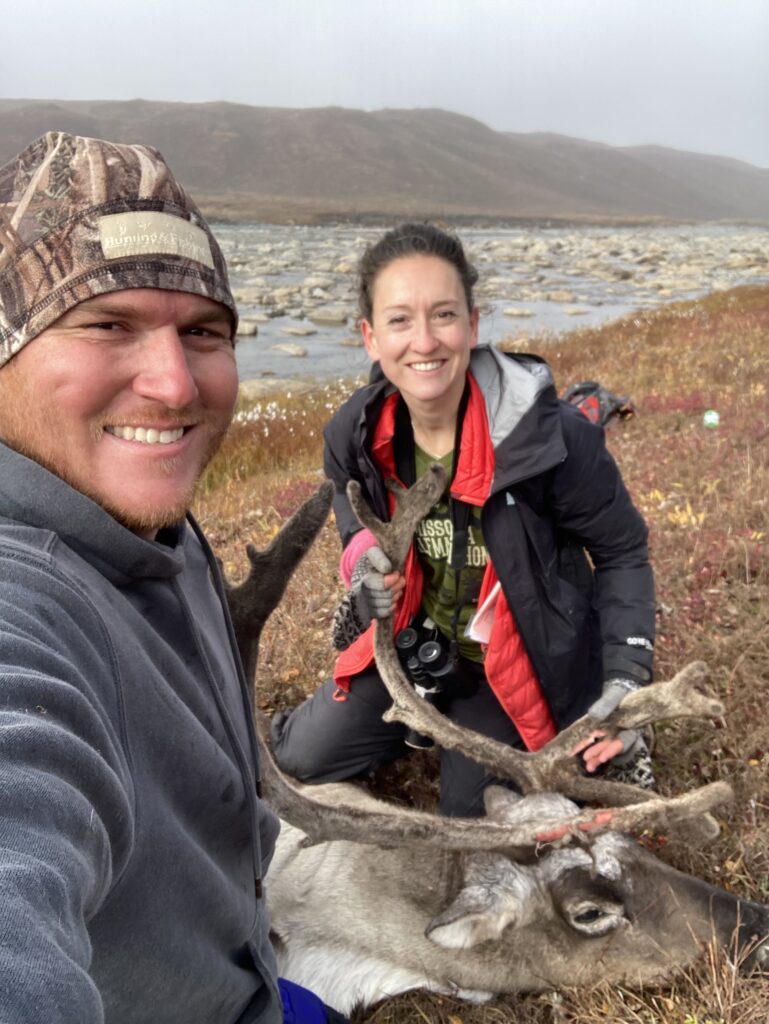
What concerns you the most about the proposed Ambler Road and associated mines?
As a fish ecologist, the potential impacts of the Ambler Road and associated mines on aquatic ecosystems concern me greatly. The populations of fish in the region, such as Kobuk River chum salmon and sheefish are incredibly important subsistence resources and represent world-class angling opportunities, could be threatened by contamination, siltation, increased harvest, and chemical spills resulting from the industrial developments. To me, the risks to these special fish populations from the Ambler Road are not worth the supposed benefits, which would mostly be the enrichment of foreign mining companies.
How might you be impacted if the proposed Ambler Road were built?
If the Ambler Road were built, people like me who enjoy a true wilderness setting for fishing, hiking, rafting, and hunting would have fewer rivers to float and game trails to follow out of sight and mind of human noise and degradation. There are not many places, even in Alaska, where an experience like this can still be enjoyed. These undegraded landscapes are chipped away at and eliminated year after year. Because of this, the few wild places we have remaining should be conserved all the more fiercely against unneeded development.
What’s the biggest misconception you’ve heard about the proposed Ambler Road?
The most common misconceptions I hear about the Ambler Road are that the road will likely be open to public use someday, and that local people overwhelmingly support it. There is no guarantee or hint of the road ever allowing access to the public for recreational activities. Many of the villages and tribal organizations of the region are opposed to the road.
What might you say to someone who said, “I don’t understand why this road is such a big threat?”
If someone were to ask me why the Ambler Road should be considered such a big threat, I’d ask them about national parks or highly valued public lands in their neck of the woods. Do they want to see those places bisected by roads and mines and the fish and wildlife potentially harmed? For example, would a Montanan, who cares about public lands and outdoor recreation, support a new road bisecting the Bob Marshall Wilderness or Glacier National Park to access some undeveloped mining prospects? Surely not! And it is a similar situation for Alaskans when it comes to the Ambler Road and the rest of the Brooks Range.
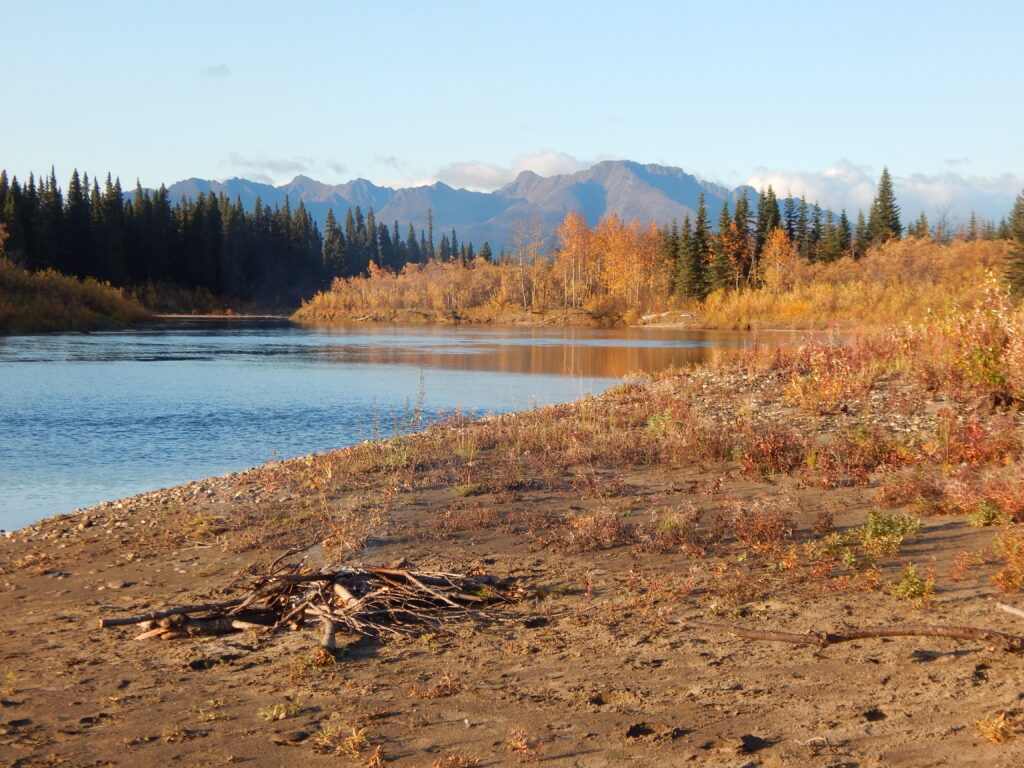
Why is it important that hunters and anglers across the nation speak up against the proposed Ambler Road?
For hunters and anglers, this is an opportunity to shape the outcome of the Ambler Road decision. They are often people who are out on the land and waters the most and know the ins and outs of Brooks Range geography, fish distribution, and wildlife habits. If hunters and anglers can be vocal in this debate in the Ambler Road, there’s a chance we’ll see a better outcome.
Is there anything else you think folks should know?
When I think about resource development in Alaska, I think going into the future we can be a lot more strategic and treat our environment a lot better instead of taking, pillaging, and then leaving a lot of nasty stuff behind, which has unfortunately been a big part of the history of the state. We should be more selective in the future about industrial development and avoid megaprojects with high risk like the Ambler Road.
Photo credit: Kevin Fraley
Sign up for Hunters & Anglers for the Brooks Range updates here.
The views, thoughts, and opinions expressed in the above blog are those of the individual and do not necessarily reflect the views of Hunters & Anglers for the Brooks Range or partners. HABR does not accept responsibility for these views, thoughts, and opinions.

